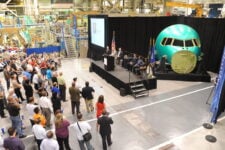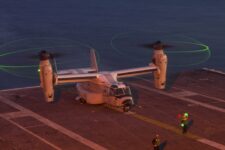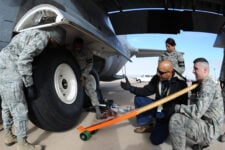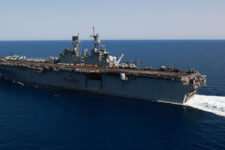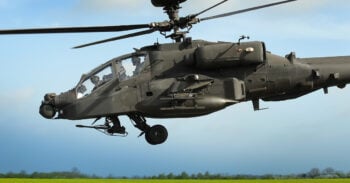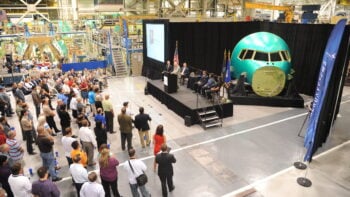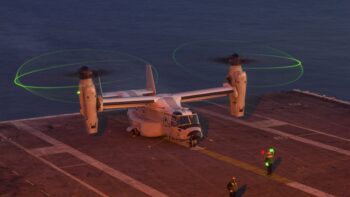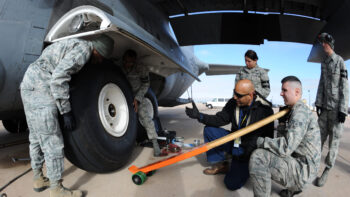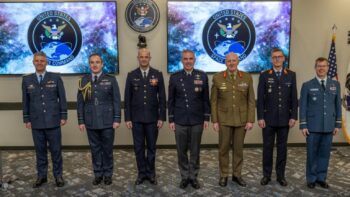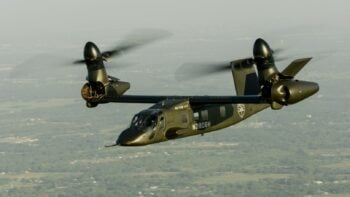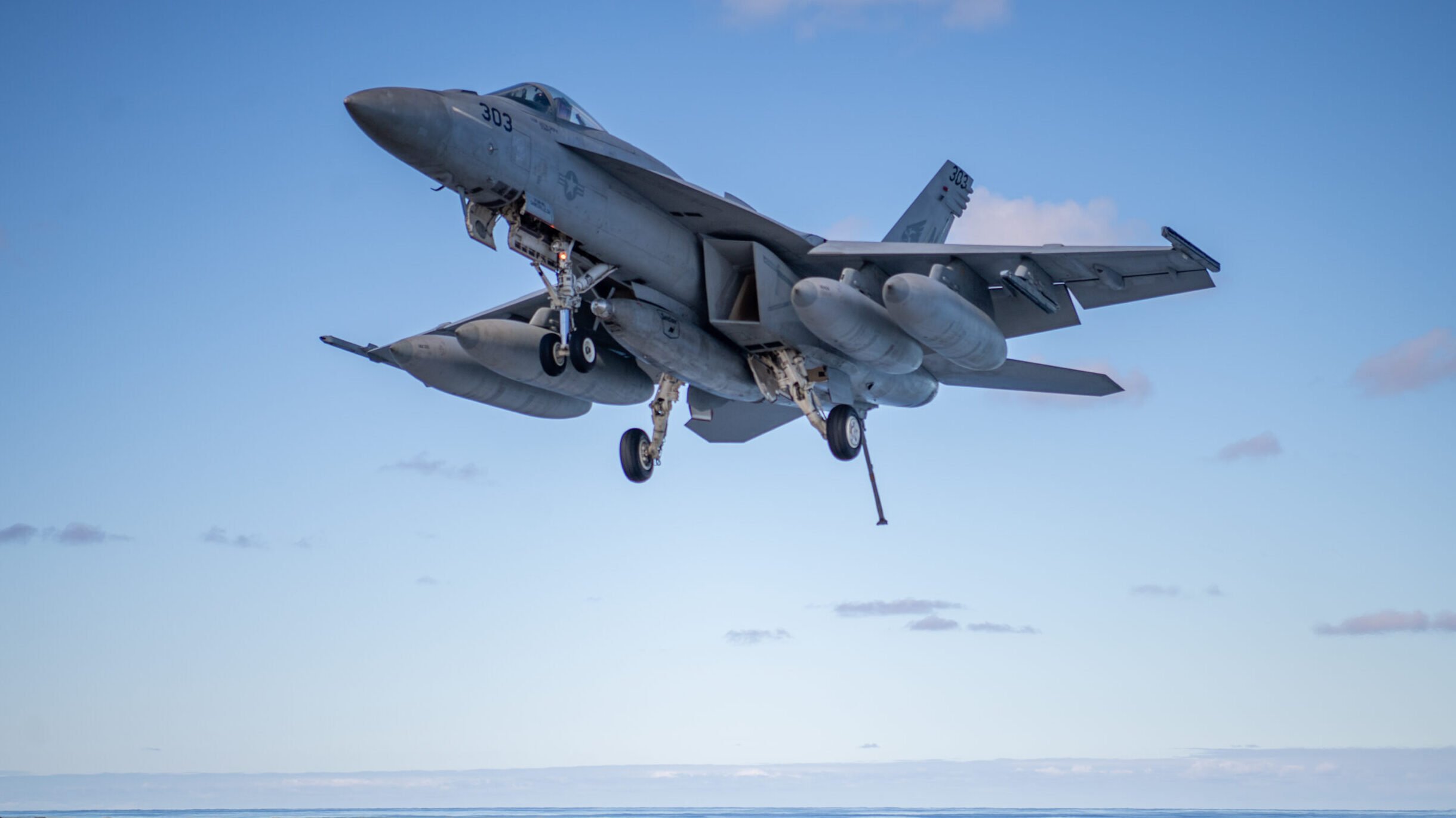
An F/A-18E Super Hornet, from the “Kestrels” of Strike Fighter Squadron (VFA) 137, makes an arrested gear landing on the aircraft carrier USS Nimitz (CVN 68). (U.S. Navy photo by Mass Communication Specialist 2nd Class Justin McTaggart)
Updated 8/31/23 at 1:35 pm ET with comment from GE and Lockheed Martin.
WASHINGTON — Three top American aerospace defense contractors are competing to build the aircraft for the Navy’s secretive next-generation strike fighter program, while two others seek to produce the engine, the service confirmed to Breaking Defense today.
According to a Sunday report from Aviation Week, Boeing, Lockheed Martin and Northrop Grumman are all vying to build the aircraft slated to replace the Navy’s F/A-18 fleet. The same report identified Pratt & Whitney and GE Aerospace as the engine competitors.
In response to a request for comment from Breaking Defense, a Navy spokesperson said “F/A-XX has recently completed the Concept Refinement Phase and has entered Design Maturation. Navy confirms that Boeing, Lockheed Martin, Northrop Grumman, GE Aerospace, and Pratt & Whitney are industry participants in the F/A-XX Program.”
The service “has identified operational reach, capacity, long range kill chains, autonomy, and next generation survivability as key enablers in the Air Wing of the Future and supporting Family of System,” the spokesperson added.
Boeing declined to directly confirm it was in the competition, but provided a statement from Steve Nordlund, vice president and general manager at Boeing Air Dominance in which he said, “Boeing fighters are the backbone of today’s carrier air wing, and we’re using what we’ve learned to inform the multi-billion dollar strategic investment we’re making in advanced open mission systems and brand new, all-digital factories of the future.”
“We are fully committed to helping the US Navy achieve its future vision,” he said in the statement.
Candis Roussel, a spokesperson for Lockheed’s Skunk Works division, declined to comment specifically on the Navy’s announcement. However, Roussel added that “we’ve been hard at work to advance critical technologies to enable advanced air dominance solutions. Delivering these cutting-edge solutions timed to need depends on digital engineering, advanced manufacturing and a team unified around this mission.”
A spokesperson for Northrop Grumman confirmed to Breaking Defense the company is participating in the development work for the Navy’s F/A-XX efforts, but did not elaborate. However, earlier this this summer, Northrop CEO Kathy Warden indicated that the company was pursuing the Navy’s fighter effort. And Tom Jones, president of Northrop’s Aeronautics Systems, told Aviation Week that “Our focus and investment in digital engineering, advanced manufacturing and legacy in designing and fielding aircraft with advanced mission systems allow us to rapidly design, execute, and sustain current and future systems.”
Spokespeople for both Pratt & Whitney and GE Aerospace confirmed their participation in the competition.
The program to build the Navy’s next strike fighter is formally called “Next Generation Air Dominance” — the same name the Air Force has given its next-gen fighter, albeit a separate effort — and is largely shrouded in secrecy. In recent budget requests, the Navy has said it wants to prioritize funding the research and development of NGAD over the continued production of F/A-18 Super Hornets, a decision that received a poor reception from members of Congress whose districts benefit economically from the legacy aircraft’s factories.
Development of the Air Force’s NGAD fighter is thought to be ahead of the Navy’s, with an award planned for next year. Northrop’s Warden recently disclosed the company is not competing for that sixth-gen jet. It is believed that Lockheed and Boeing are the sole competitors for the Air Force program, though neither has said so publicly.
Meanwhile, Pratt and GE are also separately vying to build the Air Force NGAD’s engine, with a top service official recently sharing new plans to have both companies build powerplant prototypes.
Air Force Secretary Frank Kendall has said that his service’s NGAD fighter will likely cost “multiples” of the F-35, and that early plans are to buy 200 copies of the pricey plane. The fighter, set to replace the F-22 beginning in the 2030s, will enjoy greater government control of data rights, Kendall has said, and will be built using a growing pool of “non-traditional” vendors.
Senator raises defense industry concerns over Boeing’s potential Spirit buy
Sen. Jerry Moran, R-Kan., says defense primes need more clarity about what happens to their programs if Boeing buys Spirit.
